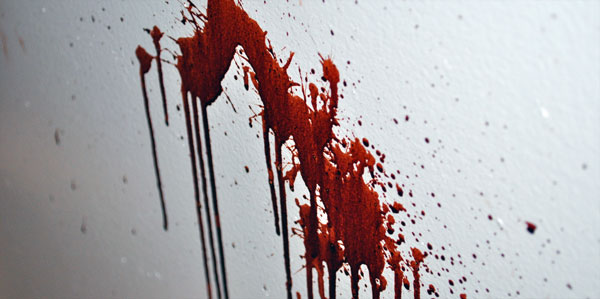Introduction
Because blood behaves according to certain scientific principles, trained bloodstain pattern analysts can examine the blood evidence left behind and draw conclusions as to how the blood may have been shed. From what may appear to be a random distribution of bloodstains at a crime scene, analysts can categorize the stains by gathering information from spatter patterns, transfers, voids and other marks that assist investigators in recreating the sequence of events that occurred after bloodshed. This form of physical evidence requires the analyst to recognize and interpret patterns to determine how those patterns were created.

(Courtesy of NFSTC)
Bloodstain pattern analysis (BPA) is the interpretation of bloodstains at a crime scene in order to recreate the actions that caused the bloodshed. Analysts examine the size, shape, distribution and location of the bloodstains to form opinions about what did or did not happen.
BPA uses principles of biology (behavior of blood), physics (cohesion, capillary action and velocity) and mathematics (geometry, distance, and angle) to assist investigators in answering questions such as:
- Where did the blood come from?
- What caused the wounds?
- From what direction was the victim wounded?
- How were the victim(s) and perpetrator(s) positioned?
- What movements were made after the bloodshed?
- How many potential perpetrators were present?
- Does the bloodstain evidence support or refute witness statements?
BPA provides information not only about what happened, but just as importantly, what could not have happened. This information can assist the investigator in reconstructing the crime, corroborating statements from witnesses, and including or excluding potential perpetrators from the investigation.